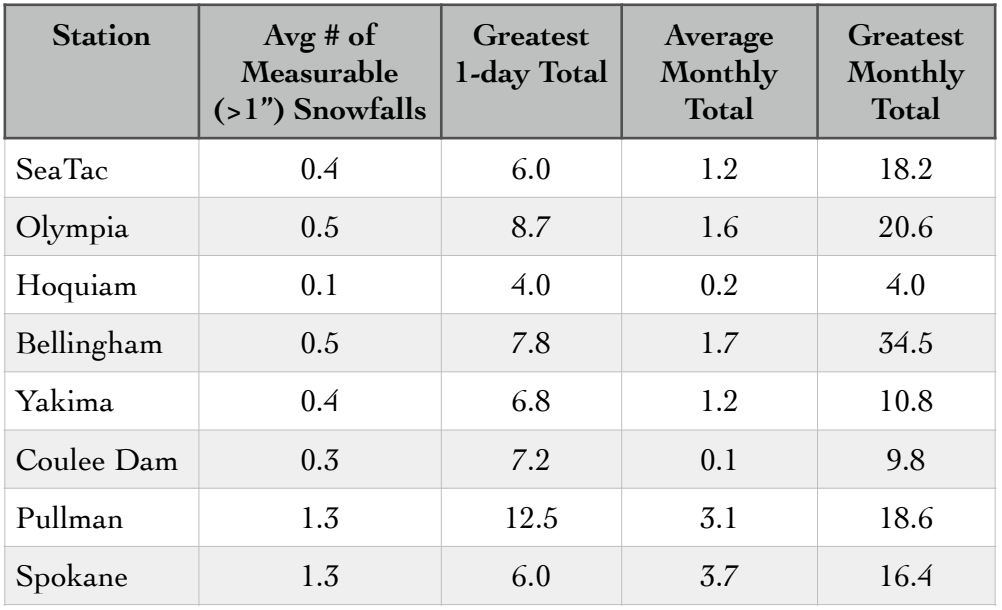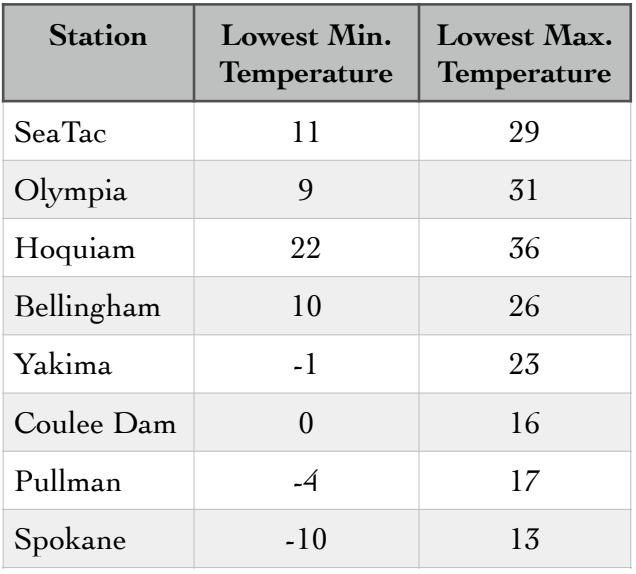March Snowfall in the Lowlands of Washington State
The subject of this piece may be cruelly ironic, given the lack of much cold weather and snow during this winter. On the other hand, perhaps some of the material here will represent a sort of comfort somewhat akin to that sought by fans of the Chicago Cubs. There is always next year!
Our objective is to provide a sense of how often and how much it can snow in the lowlands of Washington state during the month of March, again for those that dare to dream. Folks with even just a nodding acquaintance with the weather of the Pacific Northwest know that major snowfalls can occur at higher elevations well into spring. We expect that there may not be so much of a familiarity with the records at major population centers around the state, and we can do something about that.
Table 1 shows March snowfall information for a sample of WA locations. The data are based on the period of record of snowfall observations at each station – typically since the 1950s – but it’s important to note that many stations have periods of missing snowfall data. There may be some surprises. For example, the greatest March monthly total is at Bellingham (34.5”), not at Spokane, which has had its fair share of snowy months earlier in the winter season. Pullman also bests Spokane with both a larger 1-day snow total (12.5”) and a higher monthly total (18.6”) for March. Hoquiam is the least snowy station of the bunch, with its greatest March total at 4”.

The likelihood of snow in March is higher in far eastern WA (i.e., Pullman, Spokane), as might be expected (Table 1). Another sanity check comes from examining the lowest minimum and lowest maximum temperature recorded as each site in March (Table 2). It can get much colder on the east side during March. The lowest minimum and maximum temperatures for those stations are 15-20°F colder than stations west of the Cascade Mountains.

It bears mentioning that all the stats shown are for the entire historical record and so while these data can show what is possible, it is anticipated that cold-air outbreaks will gradually become less severe and frequent with time (to what extent and how fast is a prime directive of the climate community). Of course, these sorts of long-term trends will be modulated by interannual and multi-year fluctuations in wintry weather. You would be well advised to hang onto your skies and snowboards.